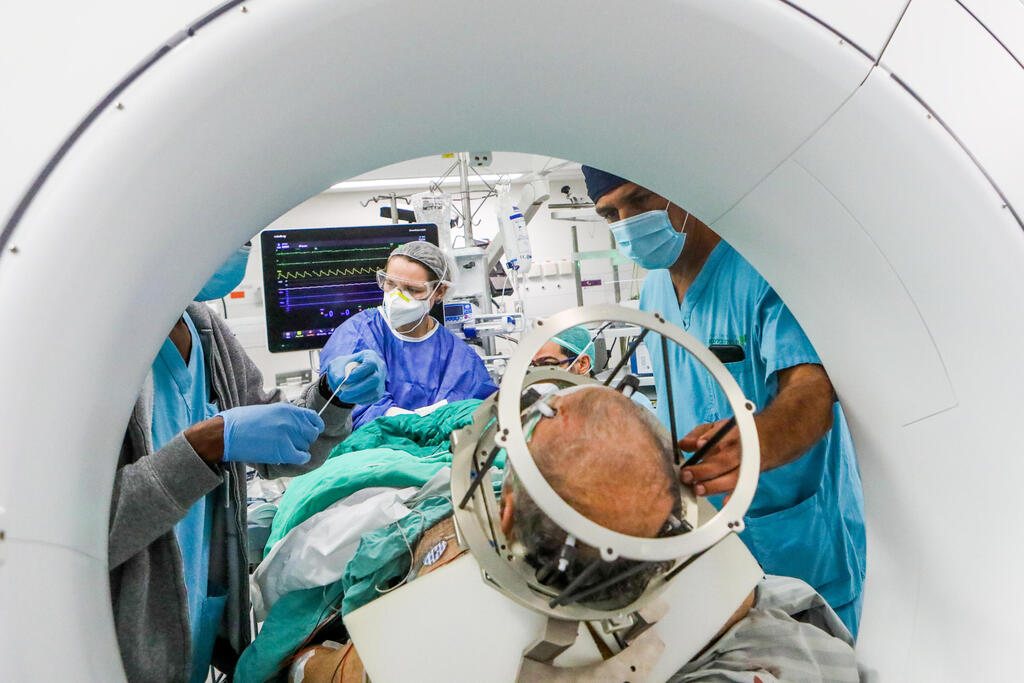Getting your Trinity Audio player ready...
Avi, a medical technician in his 20s from Bnei Brak, had been dealing with epilepsy since he was six. For 16 years, his life was dominated by unexpected seizures that made it difficult to lead a normal life. Despite frequent episodes of disconnection and involuntary movements—occurring daily and accompanied by severe fatigue and diminished functioning—he fought to pursue his studies and hold down a steady job.
Shelly, a caregiver in her 50s from Israel’s Judaean Foothills, had faced epilepsy since the age of nine. She spent many years afraid to leave her home or find work. Despite frequent seizures where her children saw her lose consciousness, fall and get injured, she persevered in raising her family, though each seizure episode brought a gradual decline in her memory.
Alona from northern Israel had suffered from epilepsy since she was ten, preventing her from working or leading an independent life. Every night for over 40 years, she would wake in distress, her arms and legs moving involuntarily, leaving her disoriented and dealing with incontinence, all while next to her spouse.
All three sought a comprehensive evaluation that revealed they were candidates for surgery to remove the disease’s focal point in the brain. They each underwent the operation successfully, and the condition was eradicated.
Patients fear surgical complications
Epilepsy is a neurological disorder of the central nervous system. In cases of epilepsy—known as “falling sickness”—there is a disruption in the brain’s electrical nerve cell activity, leading to seizures.
Unfortunately, among the roughly 100,000 epilepsy patients in Israel, many remain unaware of surgery as an option or fear undergoing it, despite its high safety rate and low complication rate.
Out of all patients, around 30,000 do not respond to medication and continue to experience seizures despite pharmacological treatment. These patients could benefit from surgery that might end or reduce the frequency of their seizures. In reality, only about 1,500 have undergone the operation, leaving many others to continue suffering the life-disrupting effects of the disease.
How the surgery works
In epilepsy surgery, the area of the brain causing seizures, known as the "epileptic focus," is removed. The procedure is usually performed under general anesthesia unless the focus is near language-related regions. In such cases, part of the surgery is done while the patient is awake to ensure speech functions remain unaffected.
The surgery typically lasts three to four hours. Beforehand, I map the epileptic focus in a special 3D navigation system based on pre-surgical test results. I also plan the surgical incision and the “window” in the skull to reach the brain focus. During the operation, I continuously monitor brain activity related to motor and visual functions, ensuring these are preserved.
With the navigation system guiding my every move, I carefully remove the entire epileptic focus. My work relies on an "exoscope"—a high-magnification microscope mounted on a robotic arm that projects the surgical field onto a 3D screen. Special glasses allow me to view the brain in three dimensions as I operate, tracking each millimeter of brain tissue as I cautiously remove it. These surgeries demand meticulous planning and extensive knowledge of brain anatomy.
The earlier the treatment, the higher the success rate
After surgery, patients awaken and are transferred to recovery, typically staying in the hospital for three to four days before being discharged. After a two- to three-week recovery period, most patients can resume regular activities. Mild headaches are common in the first few days post-surgery.
The brain tissue removed during the procedure is sent for pathology analysis, and results come back after a few weeks, identifying whether the tissue was a congenital abnormality formed during brain development or another type of growth. Based on these results, further imaging or treatment may be recommended.
For most patients, the surgery eliminates epileptic seizures entirely. In other cases, seizure frequency drops significantly, greatly improving daily function and reducing the risk of additional brain damage or even sudden death from seizures.
The surgery’s success rate depends on the location of the epileptic focus and the nature of the patient’s brain activity. When the focus is located near the temporal region (above the ear), there’s a 75% chance of stopping seizures completely. For other areas, success rates drop to around 50%. Importantly, the sooner a patient undergoes surgery, the higher the likelihood of success.
As more time passes without seizures post-surgery, the certainty of success increases. In the first year after the surgery, anti-epileptic medication is continued even if the surgery is entirely successful and no seizures occur, allowing the brain to adapt and ensure the best recovery outcome. If there are no seizures by the end of the year, medications may be gradually reduced.
Epileptic focus removal is a safe procedure with a low complication rate. The removed area of the brain usually has no “normal” function, so its removal does not typically cause neurological damage. In fact, some patients experience improvements in memory, cognition and mood following surgery. In rare cases, there can be complications, such as a new visual field defect, speech difficulty, weakness in a limb or short-term memory issues. These are uncommon and may resolve with rehabilitation.
If a patient is not a candidate for focus removal surgery, a neural or cervical stimulator can be implanted to significantly reduce seizure frequency and duration.
The impact of epilepsy on the body
Surgery, as noted, is undoubtedly a decision to consider carefully. However, the absence of treatment and ongoing seizures lead to cumulative damage and elevate the risk of head injuries, cognitive decline, behavioral changes, medication side effects and social and employment isolation.
 Dr. Idit TamirPhoto: Rabin Medical Center
Dr. Idit TamirPhoto: Rabin Medical CenterThanks to advanced technologies, including minimally invasive monitoring, laser treatments, brain stimulators and MRI-guided navigation systems, surgeries have become safer and more effective than ever.
In recent years, surgery-related risks have decreased by nearly 50%—both during the procedure itself and throughout post-surgical recovery. Additionally, new technologies have been developed to control seizures based on brain activity changes and early seizure detection.
The severe challenges faced by epilepsy patients are, in most cases, not inevitable. With today’s advanced treatments, there is real hope for seizure-free lives.
- The writer is the director of the Functional Neurosurgery Unit at the Department of Neurosurgery, Rabin Medical Center, Clalit Health Services.
Get the Ynetnews app on your smartphone:



